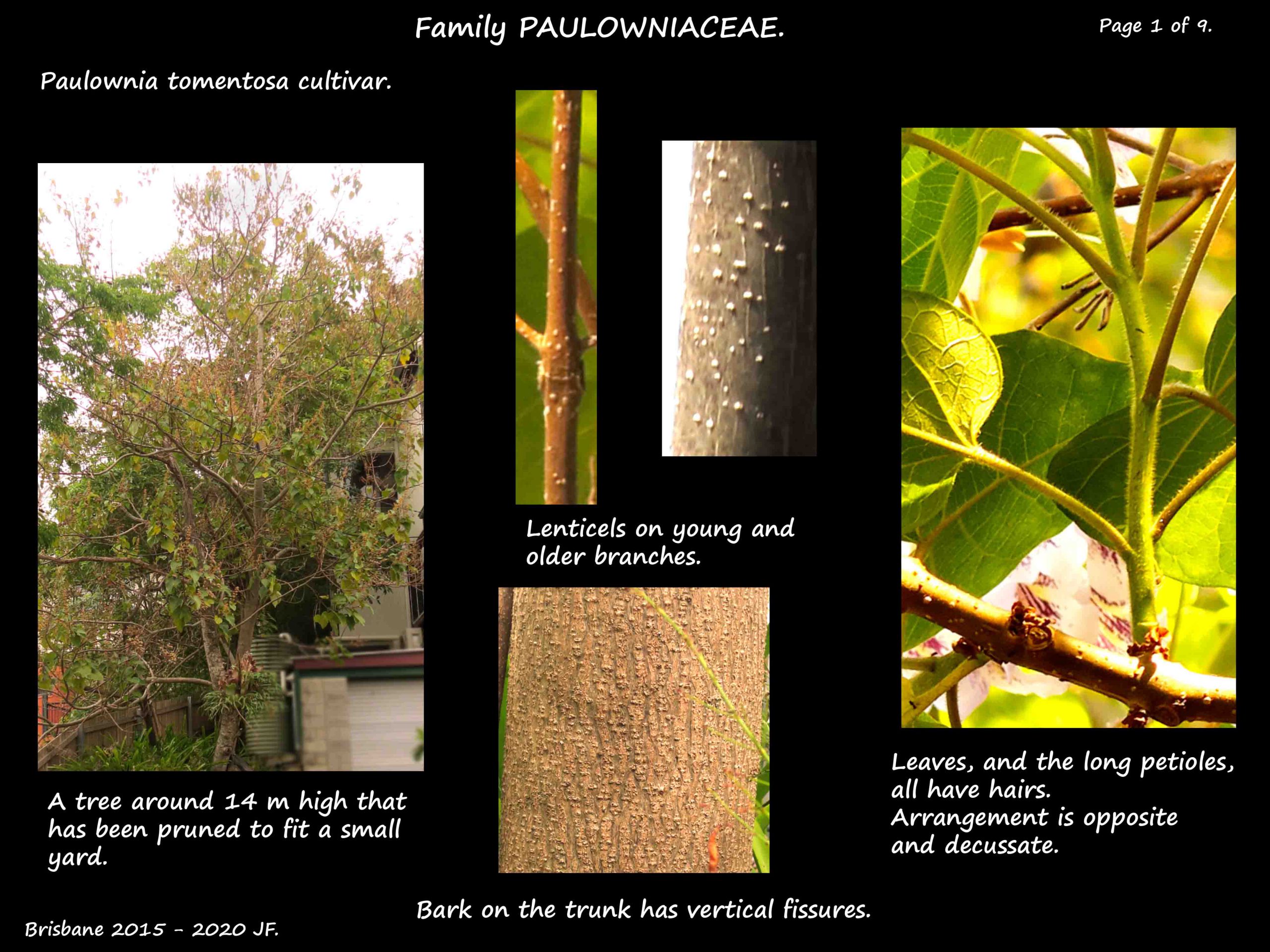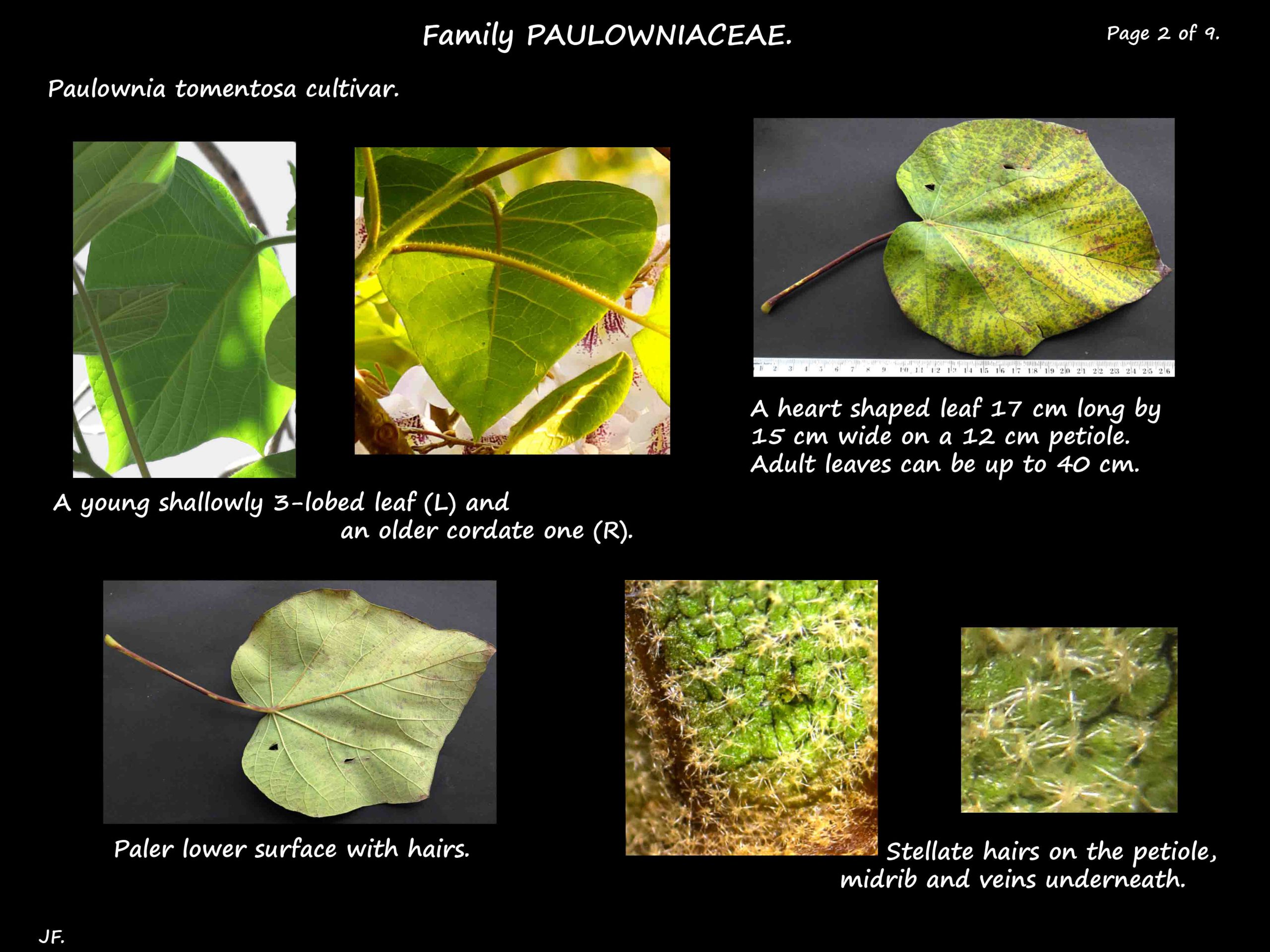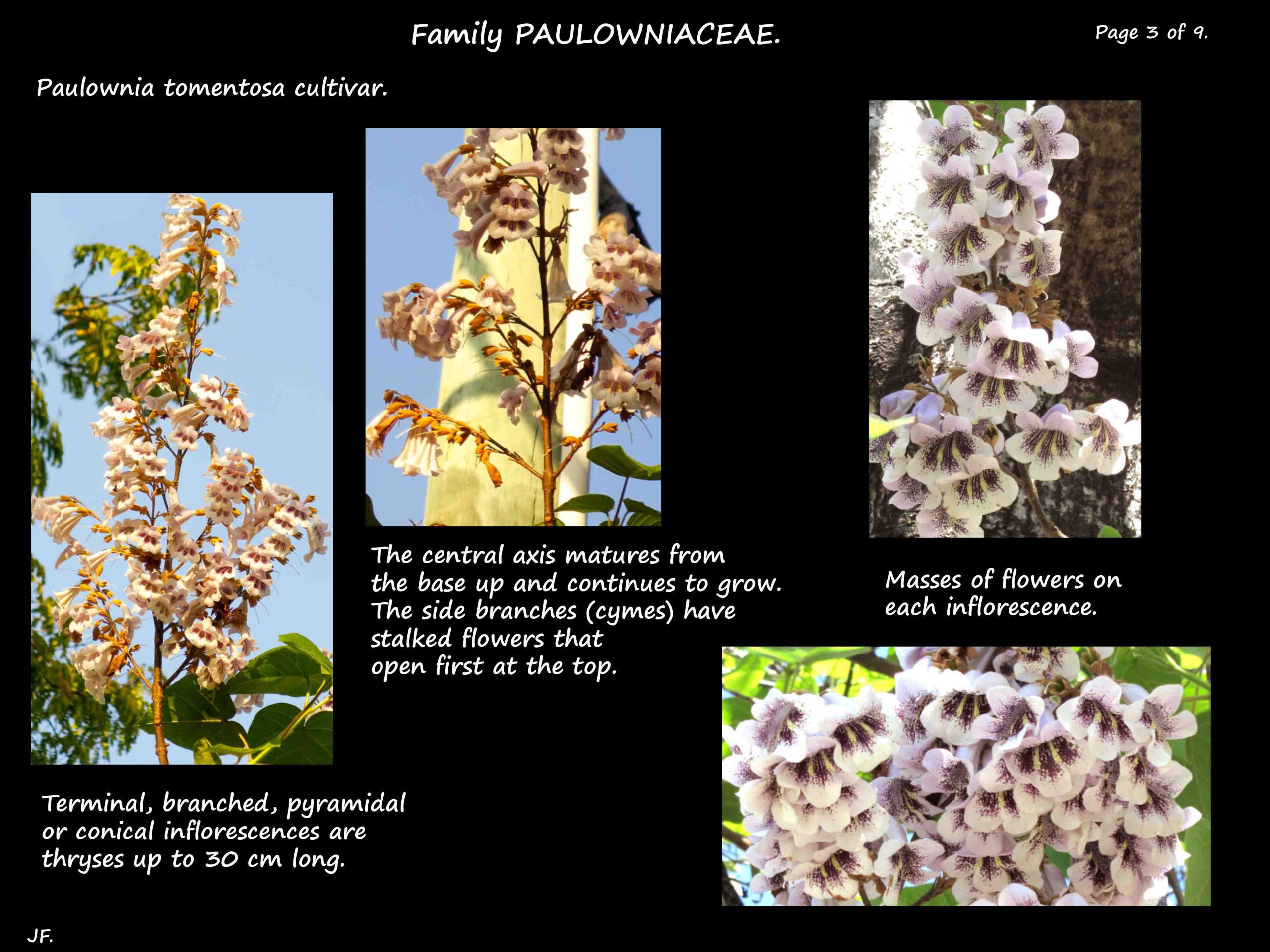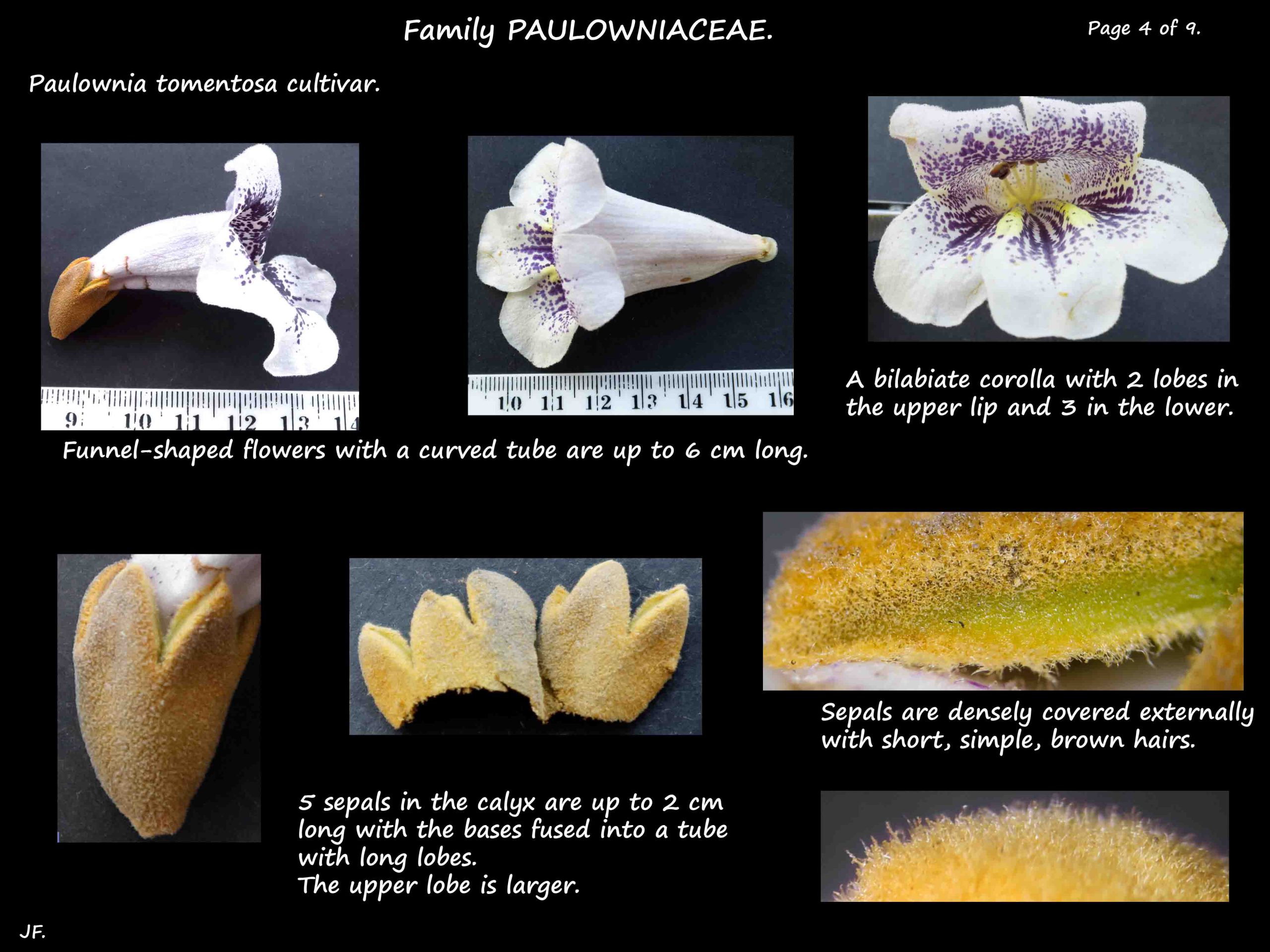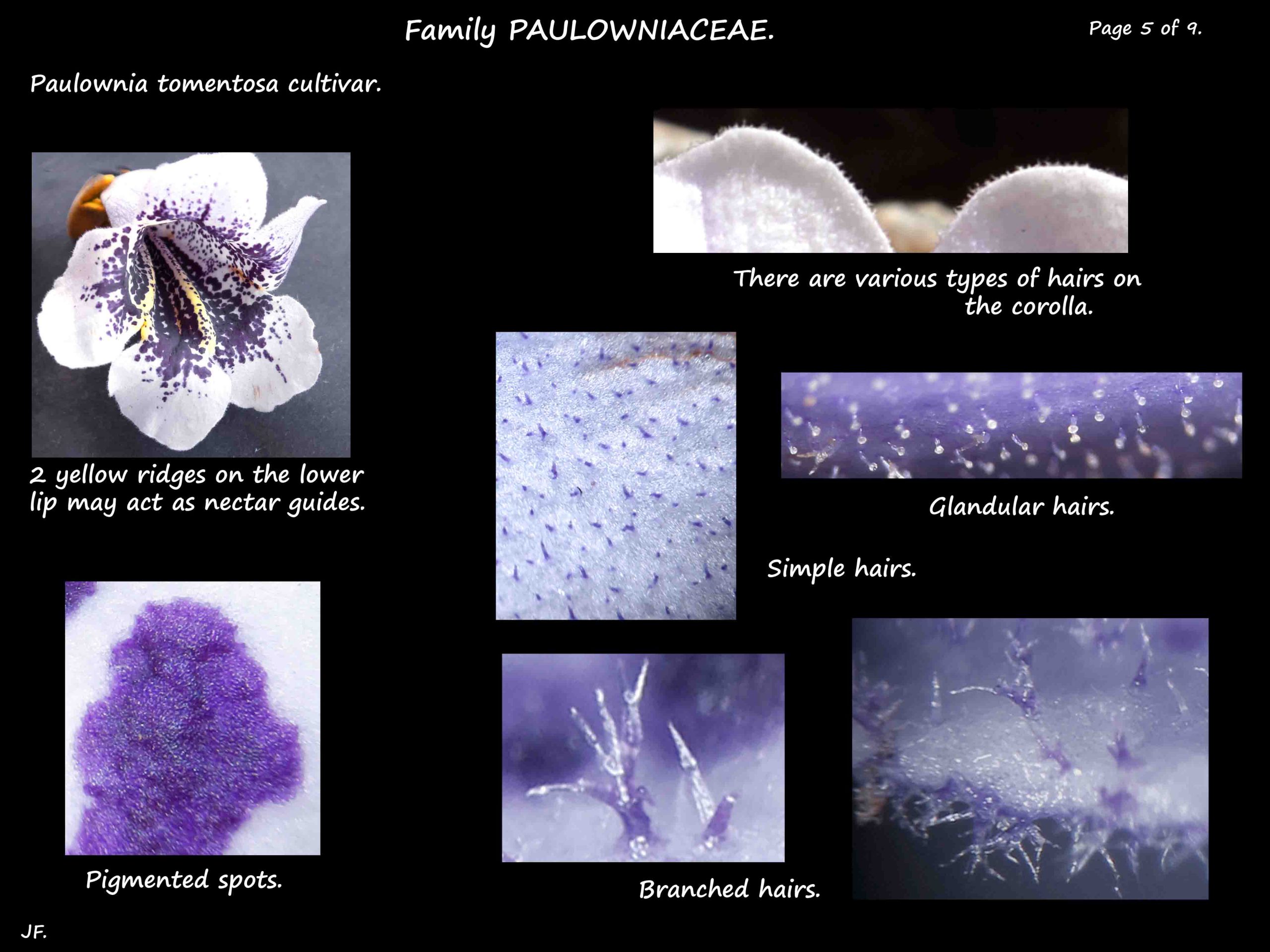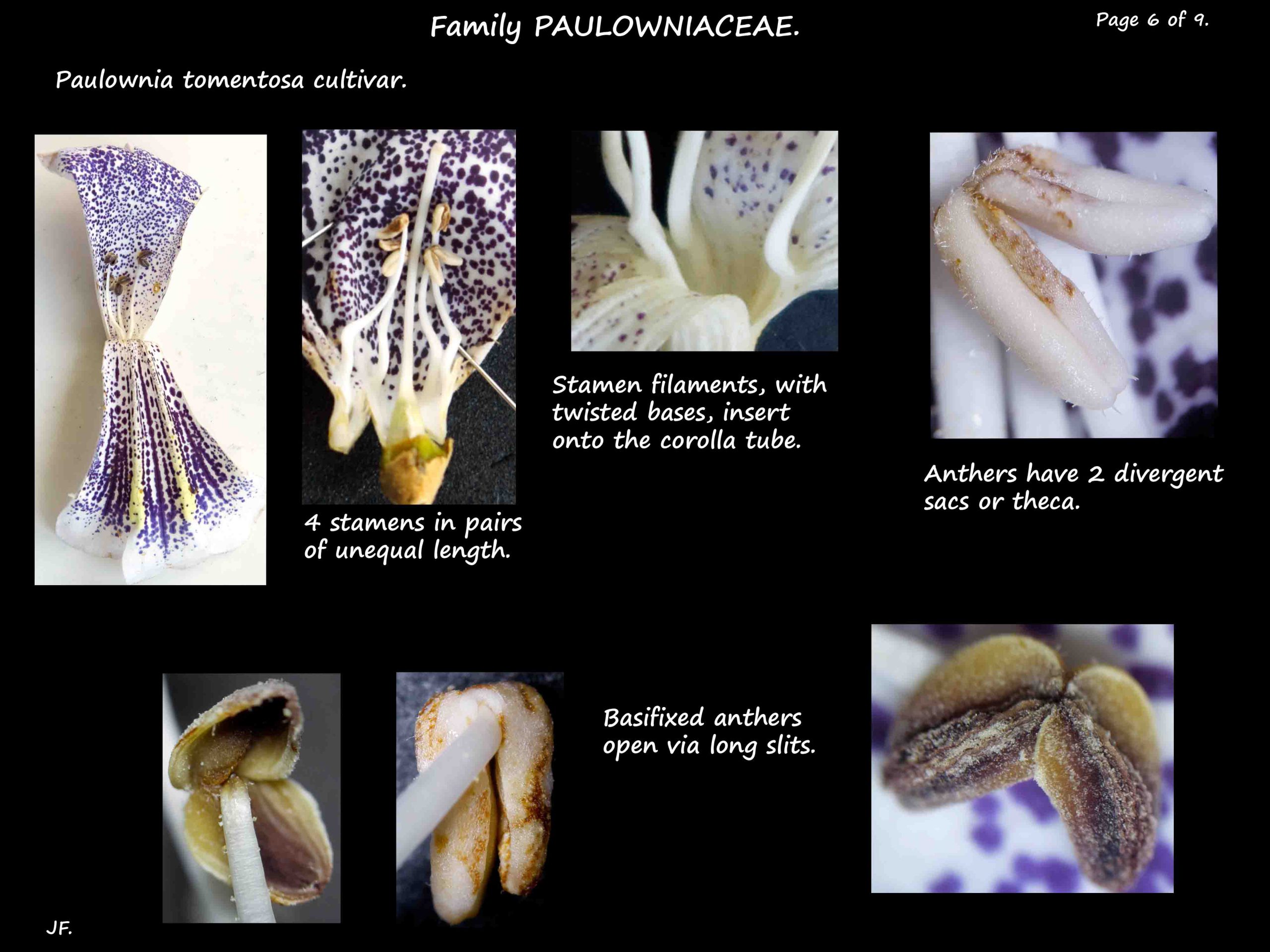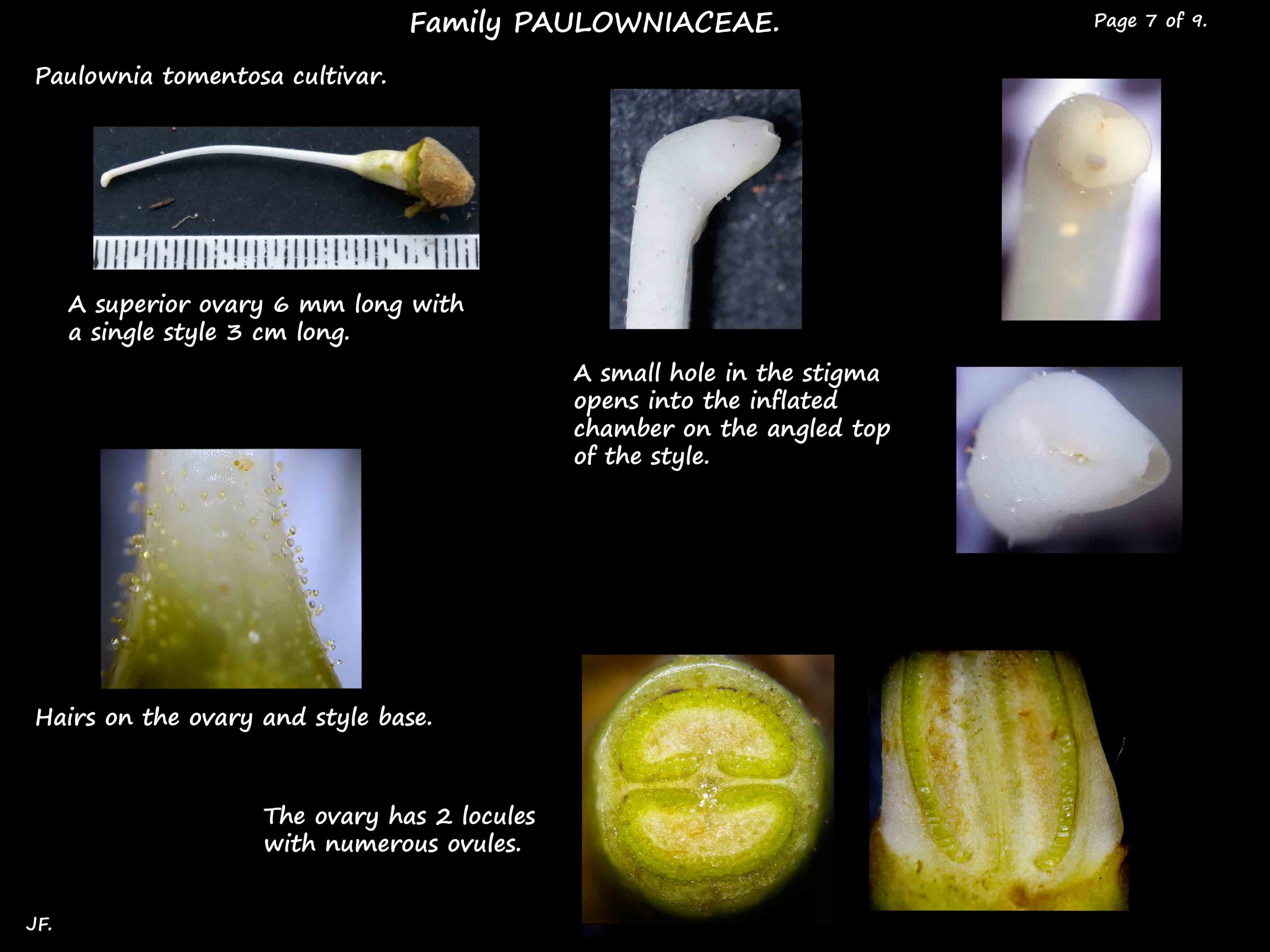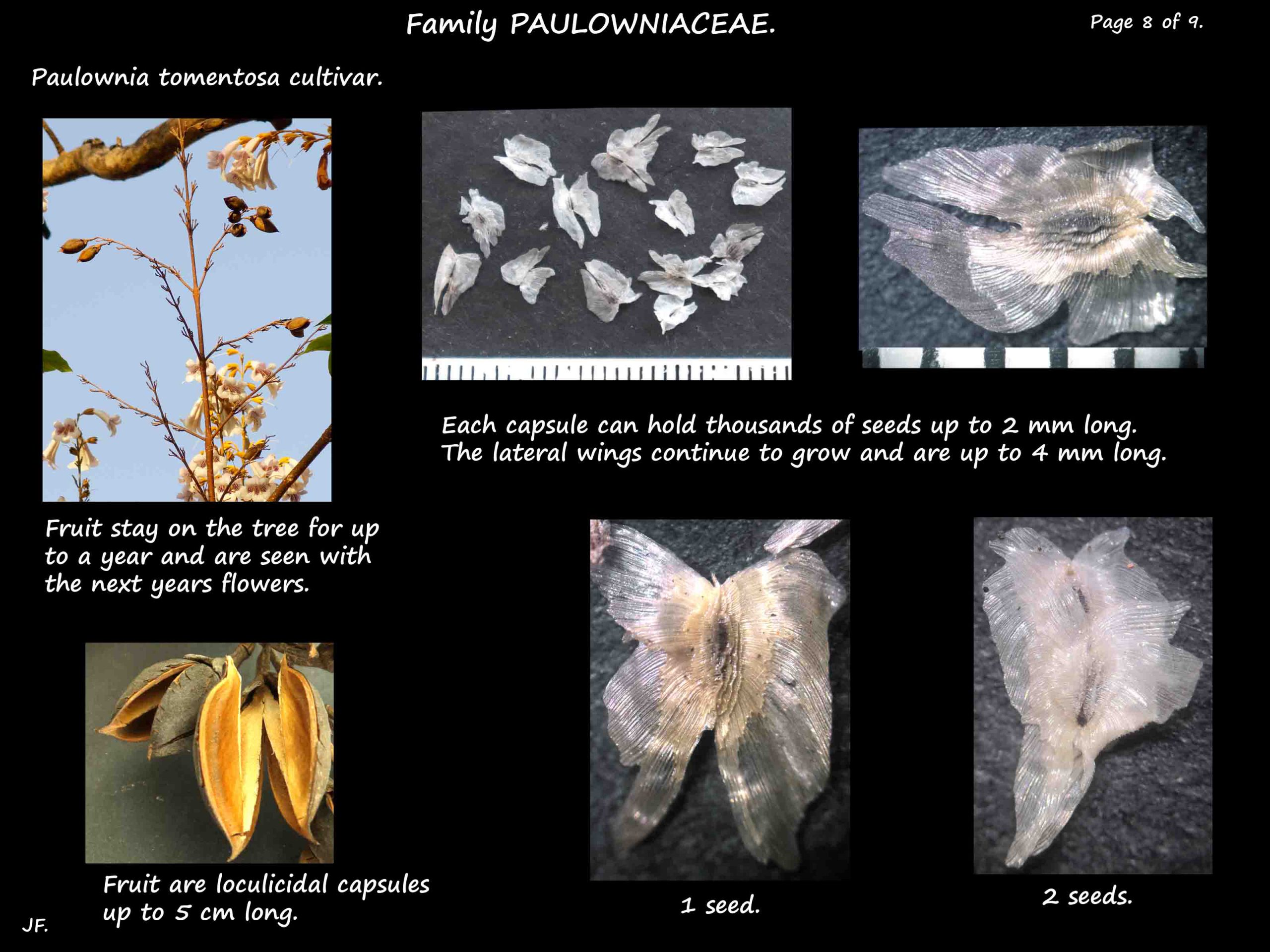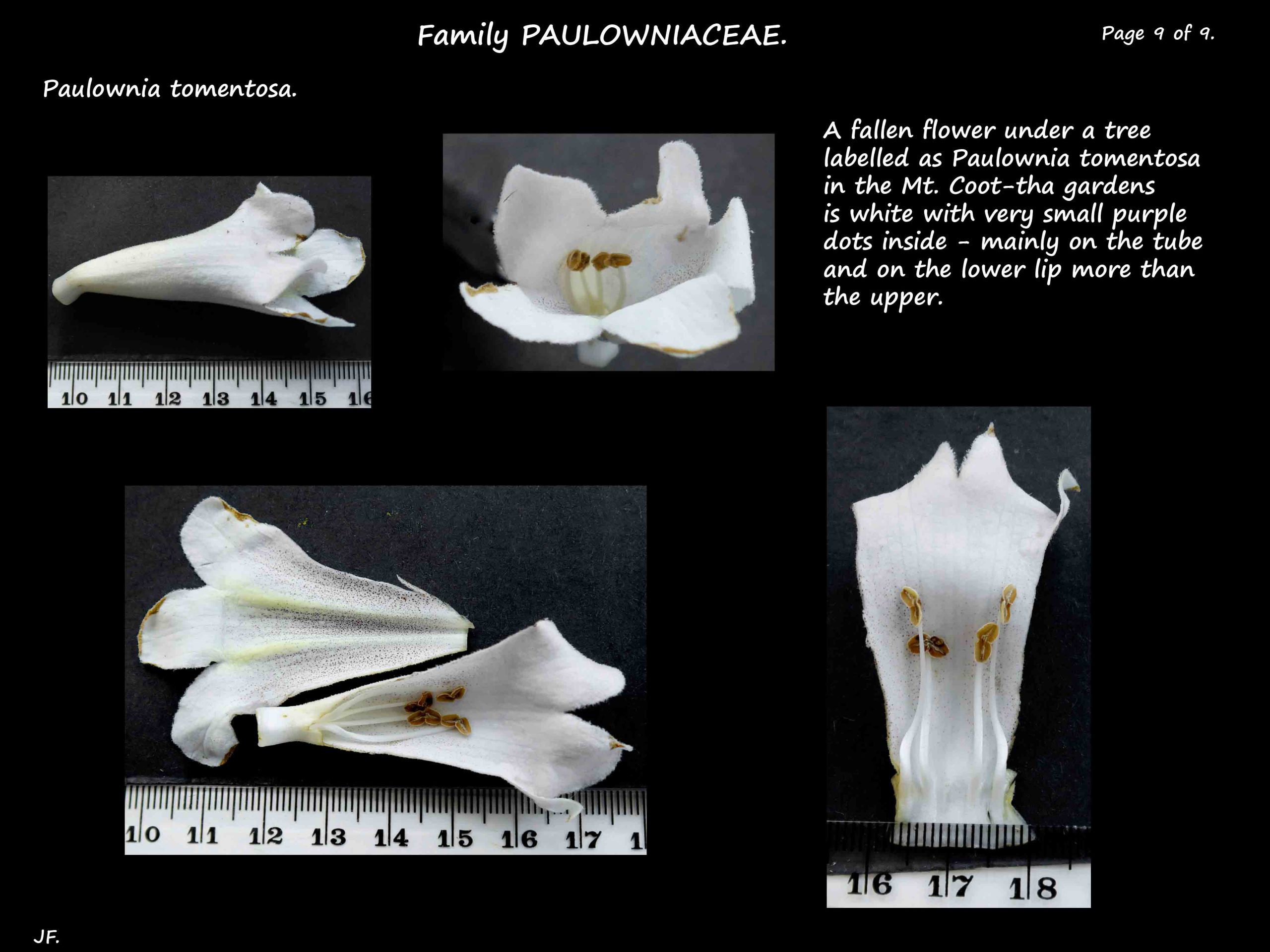Paulownia tomentosa.
Paulownia imperialis is a synonym for the Foxglove, Princess or Empress tree.
Naturalised in some areas in Queensland it is potentially an invasive weed.
One of the fastest growing trees in the world it produces millions of winged seeds and can sprout from adventitious
buds on the roots and stems.
An evergreen tree in warm climates it grows to around 20 (10 – 30) m tall with a wide crown shaped like an umbrella.
It can have a single trunk or many stems (copicing).
Young trees have pale, smooth, yellow-brown bark with large longitudinal lenticels (nodules).
With age the bark becomes darker with longitudinal slits and smooth, shiny areas.
The smaller branches are brittle and young ones have glands that make them sticky.
Older twigs are smoother except towards the ends and around the lenticels.
The leaves are opposite and decussate (alternate pairs at right angles) although they may be in whorls of 3 on new growth.
Young leaves, especially on stump sprouts, are very large (0.5 to nearly 1 m long).
They may be heart-shaped or shallowly divided into 3 or 5 lobes with a wavy edge and teeth.
The heart-shaped, adult leaves are around 30 cm long (15 – 40) and 10 to 40 cm wide on petioles 10–20 cm long.
Leaves can be densely or slightly hairy underneath.
The erect, terminal inflorescences are pyramidal or conical and 15 to 30 cm long.
They are thryses with a central axis that matures from the base up and continues to grow.
The side branches are cymes in which the flowers mature at the top first.
Side branches, themselves branched, are up to half the length of the main axis and on stalks (peduncles) 1 to 2 cm long.
The individual flower stalks (pedicels) are slightly longer than the peduncles.
Each small branch holds up to 4 funnel to bell-shaped flowers.
The brown, bell-shaped calyx has 5 sepals that are hairy externally.
The bases of the 2 cm long sepals are fused into a tube as long as the lobes.
The upper lobe is larger than the other four.
The corolla of 5 petals resembles that of foxgloves.
The fused petal bases form a slightly curved tube 5 to 6 cm long with short, rounded terminal lobes.
The bilabiate corolla has 2 lobes in the upper lip and 3 slightly longer ones in the lower.
The external surface has glandular hairs.
Flowers are described as purple to pale violet or white shaded with purple.
The lower lip has 2 pale yellow ridges that may act as nectar guides for pollinators.
The 4 stamens, up to 2.5 cm long, are inserted half way down the corolla tube.
One pair of stamens is longer than the other (as in Bignoniaceae).
The superior ovary has 2 locules with a single style nearly as long as the stamens.
At the top of the style is an inflated, tubular chamber.
The stigma has a small hole opening into the chamber a feature not seen in other Lamiales.
At the hairy base of the ovary is a nectary.
The fruit are ovoid to ellipsoid, loculicidal capsules 3 to 5 cm long with a tapering tip.
Young green capsules have glandular hairs, older ones are brown and woody.
The calyx remains and the style is often still attached.
On the tree for up to a year the capsules break into 2 (or partly 4) chambers.
A tree can release millions of flat seeds 1.5 to 2 mm long.
The seeds have membranous wings on the sides that continue to grow up to 4 mm long.
The shape of the wings is another distinguishing feature.
The ornamental ‘Sapphire Dragon’, a cultivar of Paulownia tomentosa, has large clusters of cream flowers with purple.
‘Lilacina’ has lilac to purple flowers that are mainly white inside with 2 yellow ridges.
J.F.
